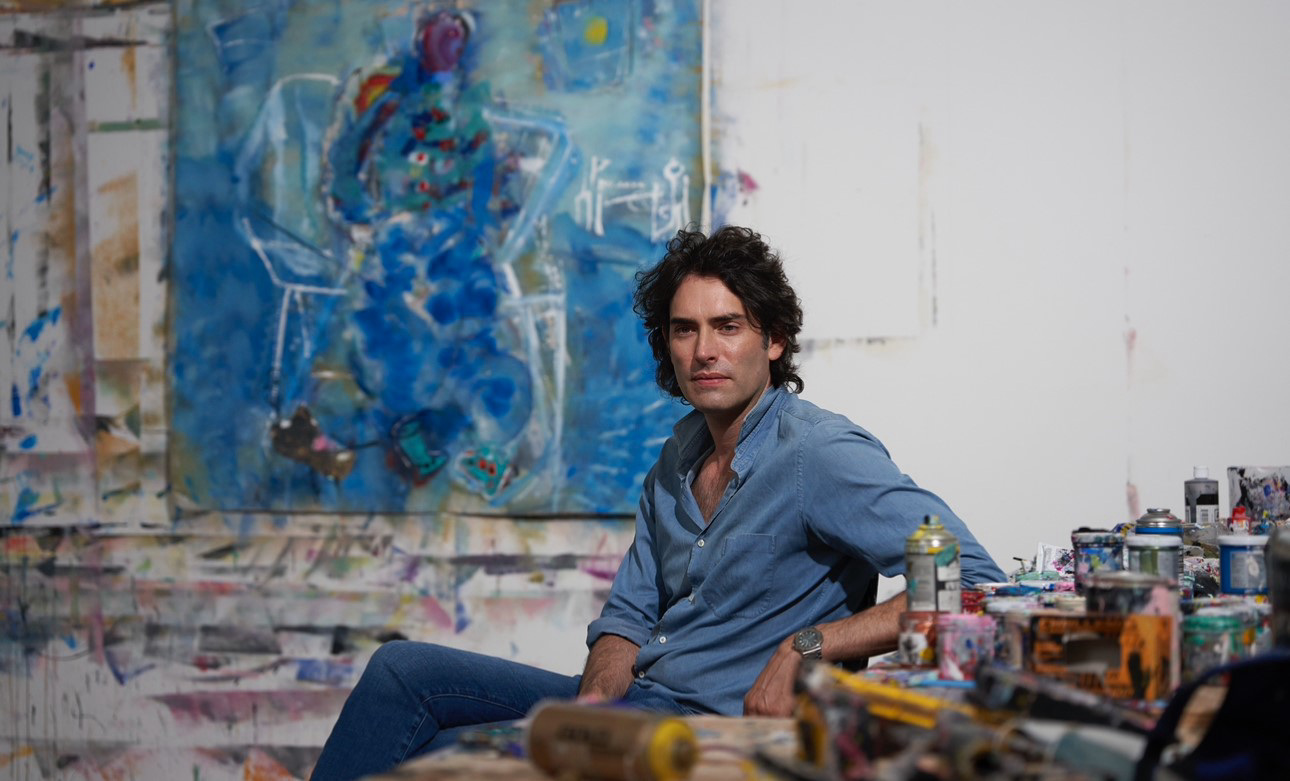
As Alexander Yulish guides me through his latest exhibition—a suite of sweeping, densely layered paintings titled “The Space In Between”—he reveals the meaning encoded in each. A chair here signifies stability. A window there represents escape. Flowers are energy sources. Small figures relate to the human condition.
“I write little things in my paintings, so small,” he says. “Hopefully someone keeps on exploring for the rest of the time they have this painting, and it becomes part of their family.” The New York-born artist doesn’t mind when viewers have their own interpretations of his canvases. Yulish is refreshingly unsentimental about his work. For him, craft is work—regimented, focused, and methodical.
One work on view at Chelsea’s AP Space gallery, titled Secret, is his most restrained yet. It took great effort for him to suppress the brightly colored motifs that often appear in his work—earlier efforts are visibly painted over. Lately, Yulish has been working toward remaining comfortable in the gray area, or what he terms the “in between.” Here, he shares what he has found in the realm between rigidity and liberation, intimacy and elusiveness.

CULTURED: How did you develop the idea for this body of work?
Alexander Yulish: I was taken by the idea of the space in between. And what that means to me is the ability to become present to all that is not said, how that affects me as a person, and how I communicate and express myself through this mercurial world. The concept was something I’ve always wanted to explore, and in 2022, it became so loud in my subconscious that it needed to be realized.
CULTURED: You’ve been working on this series over a long period of time. How has it evolved?
Yulish: When working on a painting, I think of it as part of a series of works. It’s like one big family that all share a common thread. During this series of works, I believe the viewer can tell that the body of work is related. And it’s an innate throughline that holds a story together. There are lots of hidden messages, common symbols, in each work: dogs, cats, windows, chairs, sun. For this show, if I put one of my older works in, you could immediately tell that it wasn’t part of this family. It was another generation. So, I feel like when you see the show, you’ll be able to tell that they were all made together.
CULTURED: How has your relationship with the gallery evolved over that period?
Yulish: I think the fundamental part of that relationship is just that Jean [Kim] is excited about the work and she understands the work and I trust her. I met her when she came to my studio. We just had fun sharing paintings, and she really got it.


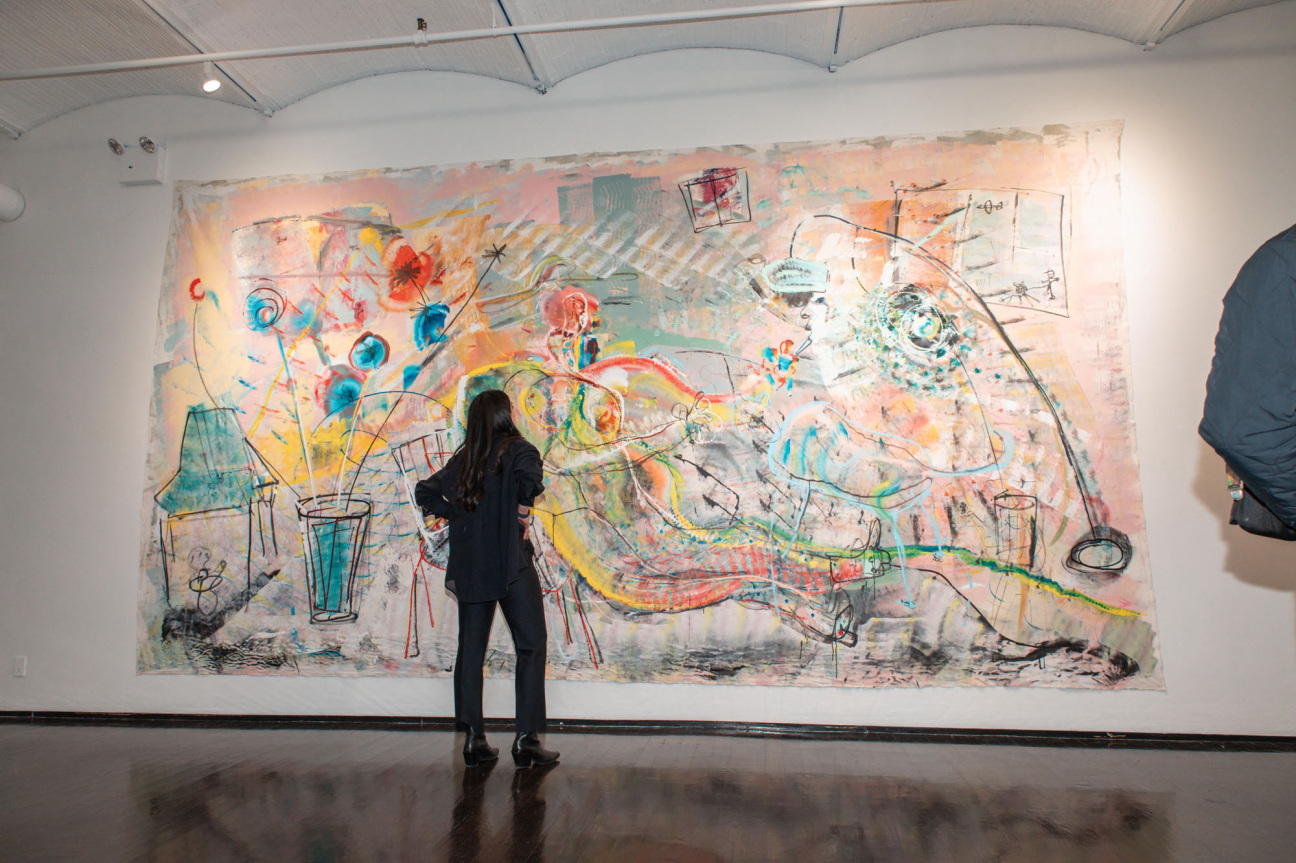
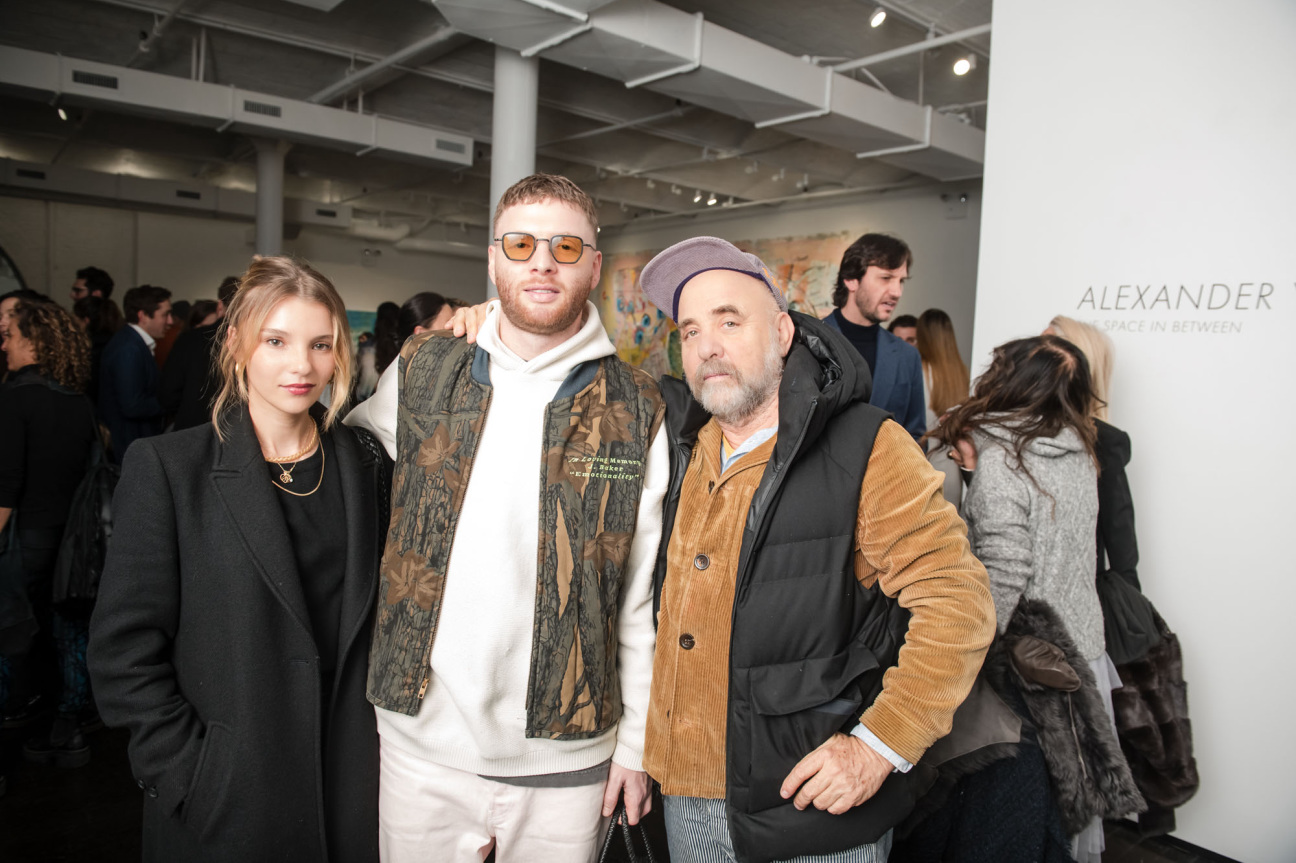
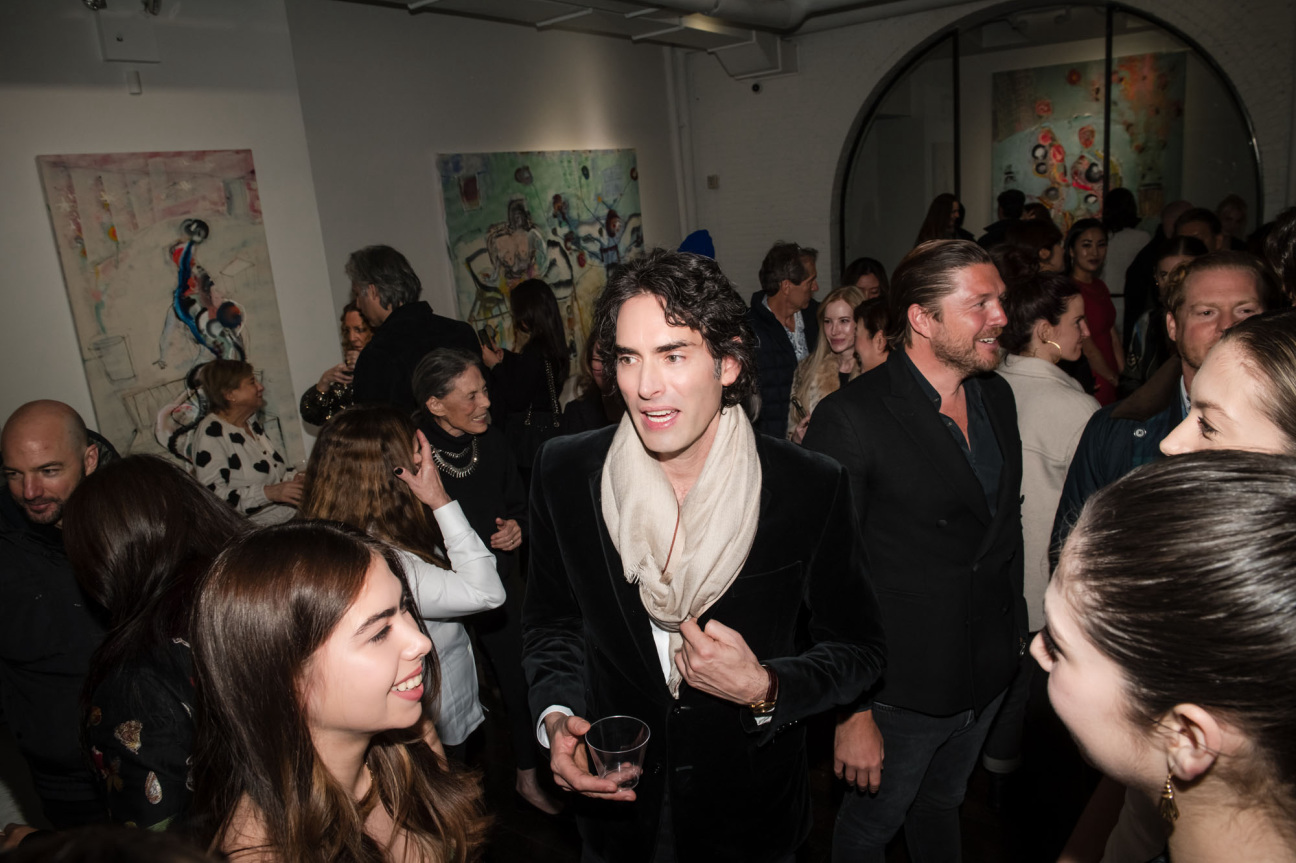
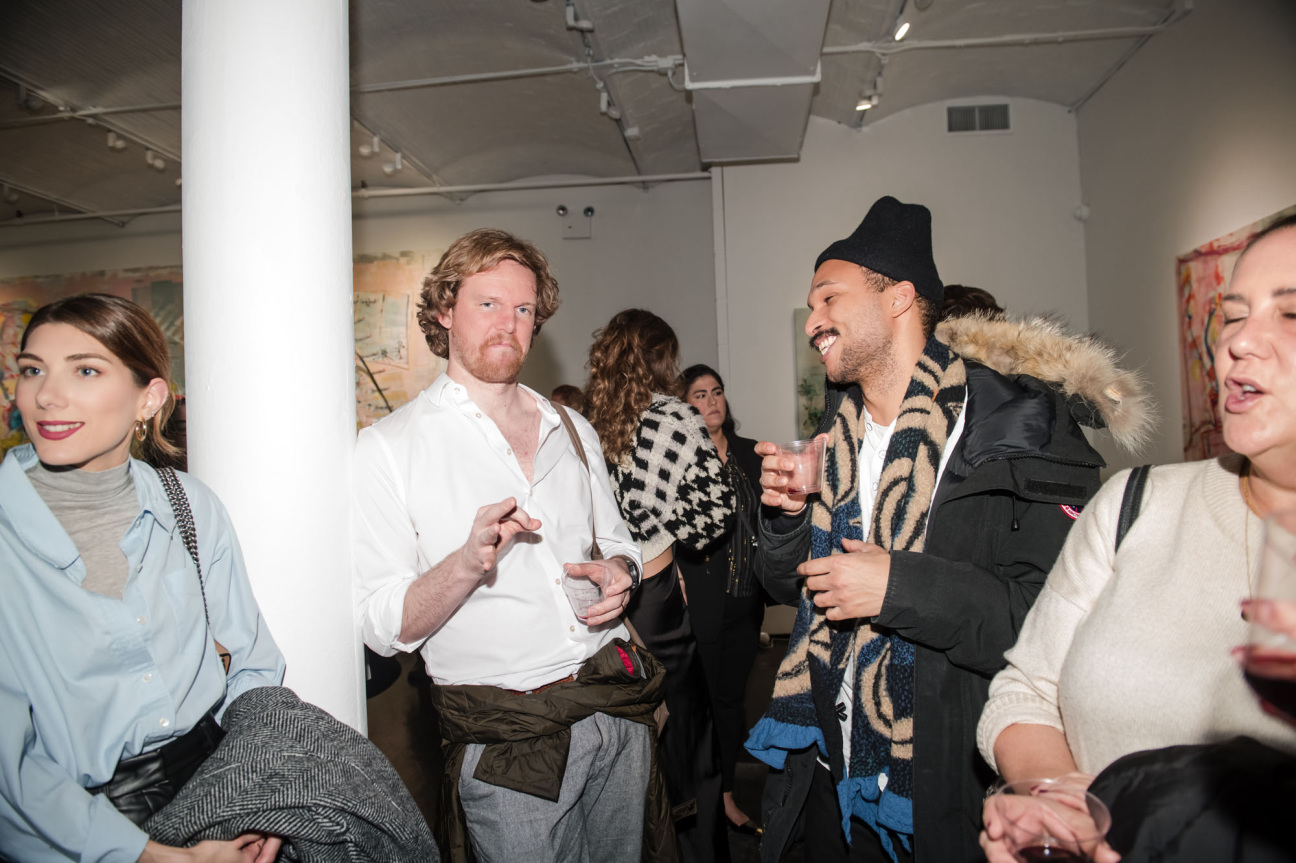
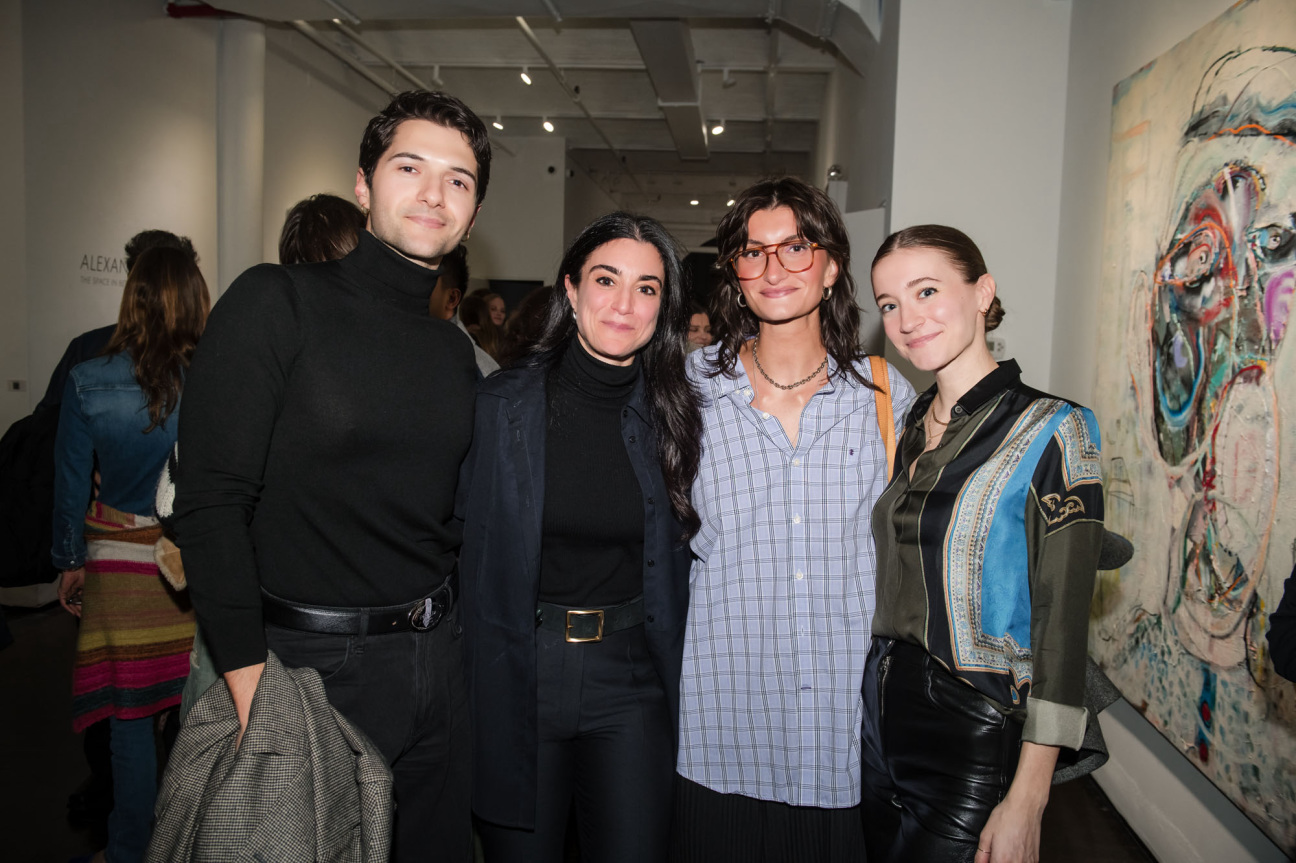

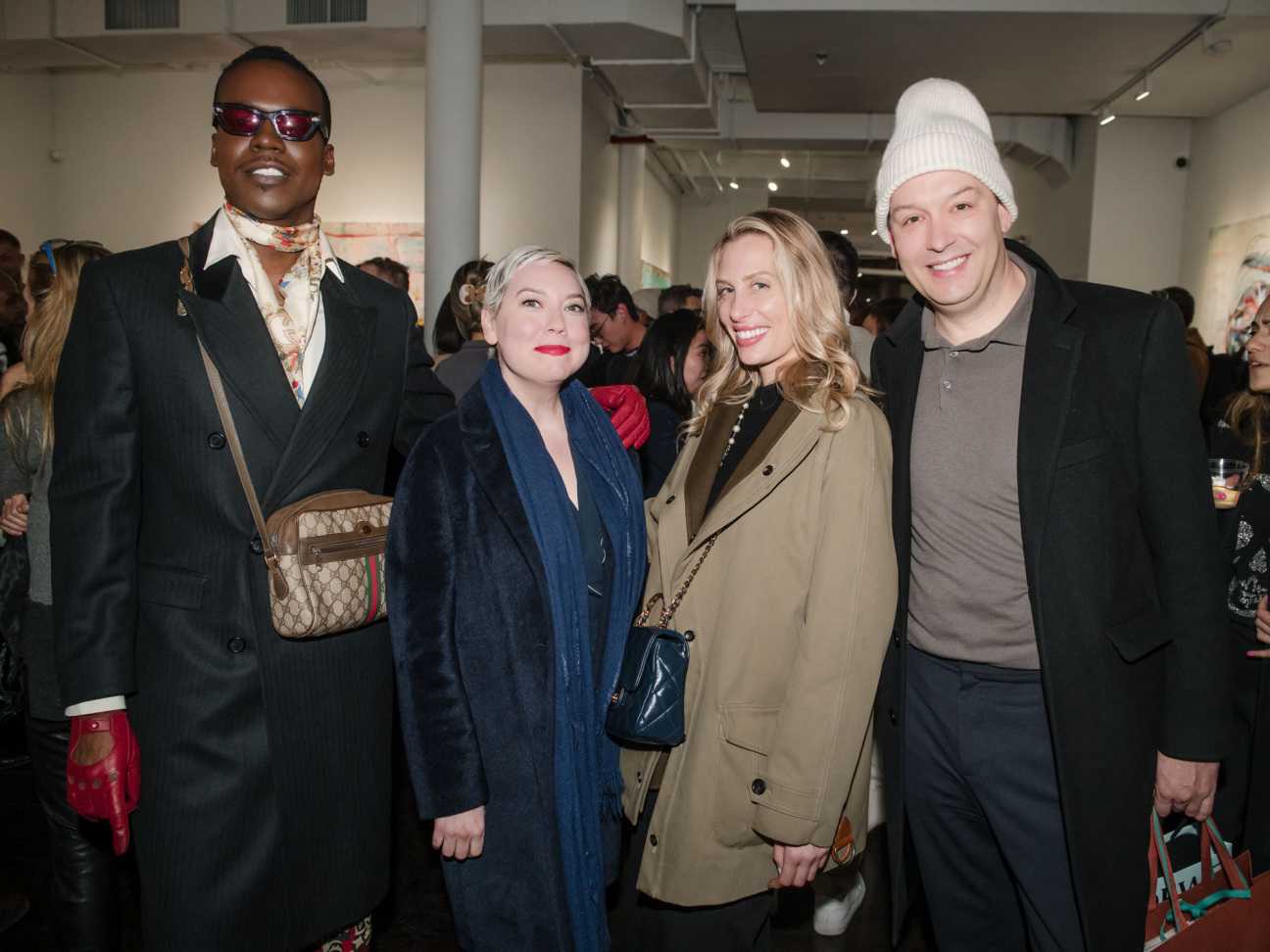
CULTURED: The works in the show are quite layered. How did you arrive at that style? Was there a moment when you felt like the process clicked?
Yulish: It clicks and it unclicks, and that’s the unusual process. I’ll go back to a painting, and if it doesn’t feel like the conversation is complete, then I have to rework it. At the end, if you’re lucky, and you’ve been as honest as you can and as clear as you can with each of those lines and what they represent, maybe you get a painting. Creating takes nurturing and the ability to destroy at the same time. If I don’t take risks in trying to move forward in a work, then I end up just repeating myself. Even the paintings that are, in essence, failures, they’re just as important, as they lead me to the next iteration. So building a body of work is what I strive to attain, and you’ll be able to see, in person, the layers. For me, it feels alive.
CULTURED: You work on quite a large scale. How did you decide on the physical size of your work, and how do you think that impacts the viewer?
Yulish: I would love for people to feel like they’re immersed in the painting. Really feel like they’re in that world and when they turn to the left, they see another painting, and then they’re in that world. Large-scale paintings have the ability to consume the viewer. It almost puts them in the room, with the chair, with the objects in the painting. But I love painting small. It’s almost harder, because there’s no room. They’re my favorite to do because they make me feel the most relieved in a weird way.
Painting for me is not about emotional exertion. It’s a job. I don’t wait for inspiration. I’m in there and eventually something happens if you’re doing the work. I try not to rely so much on emotional pain or anything like that. Some people say it’s cathartic. It’s the complete opposite for me. I’m just at work, doing what I need to do.
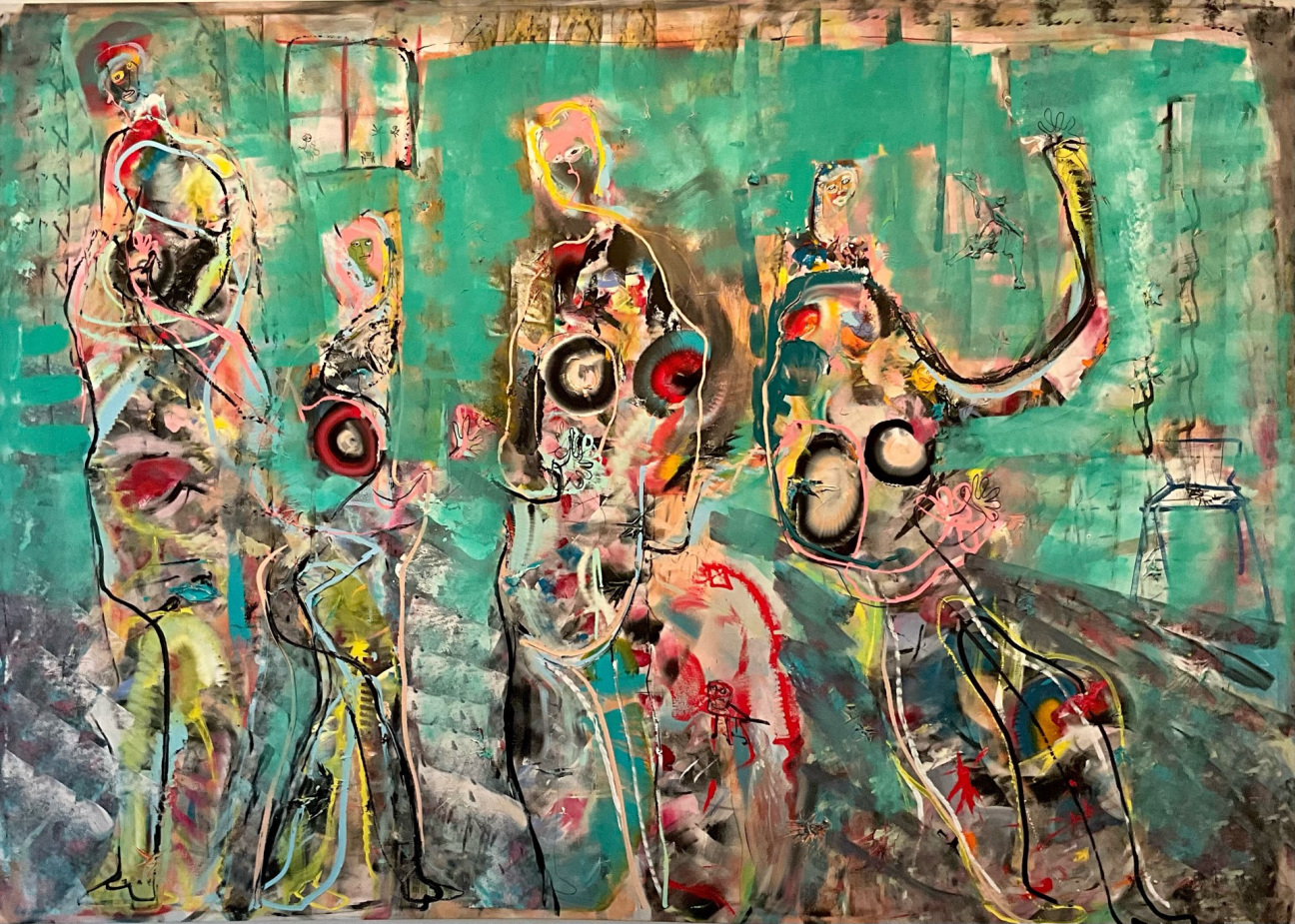
CULTURED: Do you paint every day? Do you have a certain time that you go into the studio?
Yulish: I like painting really early in the morning. Usually I work around five hours straight. I don’t like taking breaks because it just clouds what I’m trying to say. When you have inspiration, it’s great. But if you do the work, eventually you get to some sort of flow state.
CULTURED: How do you approach tackling very conceptual ideas such as intimacy or “the in-between” and translating them for an audience?
Yulish: Somebody can come to the show and see a line of red that really makes them feel something. Then they turn around and go back to the painting, it completely jolts them, and they don’t like it. That unpredictability creates some sort of reaction—whether it’s good or bad, it’s out of my hands. I don’t even like naming my paintings. It was horrific naming these paintings. It took so long because I don’t like telling the viewer what the painting is about. I love for them to discover it.
I talked to David Lynch, and I remember asking what one of his scripts was about. And he said, “Well, what do you think it’s about?” I didn’t know if it was rude, the way he said it. Then I was like, Oh, my God, he just gave me a gift. What a beautiful gift to put it on the viewer. It’s always stuck with me. That explains some of my process. There are no haphazard marks in my painting. I tend to paint one or two strokes, step back, look at the painting to see how the puzzle is working out, then go back for another three strokes. If you put red on the bottom, how is that going to balance up some somewhere on the right hand side? You have the ability to destroy a painting in the last five minutes. The last moment, which is unpredictable, is terrifying.
CULTURED: How do you know when you’re in those last five minutes?
Yulish: If we were to sit down and just talk—we just talked and talked, had some really personal talks, and it lasted for hours upon hours—at the end, when we looked at each other, we’d acknowledge that there is nothing left to say. That’s when a painting is done.
“The Space In Between” is on view through March 15, 2024 at AP Space in New York.










 in your life?
in your life?

